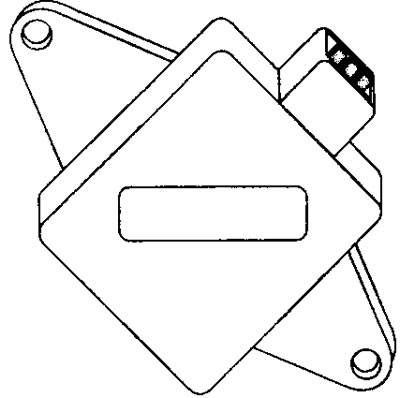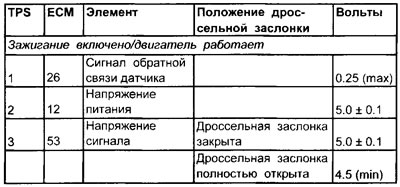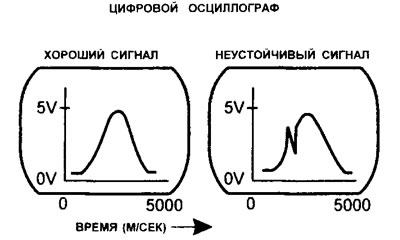
11.26 Throttle position sensor (TPS)
Throttle Position Sensor Voltage Values
Terminal numbers

Throttle Position Sensor Resistance Values
Note. When replacing the throttle position sensor, disconnecting the battery for approximately 15 minutes should restore the memory of the electronic control unit.
Terminal numbers
| TPS | ECM | Element | Throttle position | Resistance |
| 1 and 2 | 26 and 12 | Fixed | Not installed* | |
| 1 and 3 | 26 and 53 | Signal | Closed | Not installed* |
| open | Not installed* | |||
| 2 and 3 | 12 and 53 | Signal | Closed | Not installed* |
| open | Not installed* |
* Although no values are set, with open throttle as described in the tests, the resistance should change evenly.
Influence of external factors
- Incorrect adjustment
- Too tight fastening screws
- Loose throttle position sensor multi-pin connector
- Poorly adjusted or stuck throttle
- Poorly adjusted or stuck throttle cable
Throttle position sensor test (TPS) (general check)
1. Inspect the throttle position sensor multi-pin connector for signs of corrosion or damage.
2. Make sure the connector terminal pins are properly installed and making good contact with the throttle position sensor multi-pin connector.
3. Any of the above malfunctions result from a weak or intermittent signal from the throttle position sensor.
Note. For different Citroen and Peugeot vehicles equipped with Bosch Motronic MP3.1, 3.2 and 5.1, several different configurations are used to connect the ECU pins to the throttle position sensor terminals (see wiring diagram).
Checking the performance of the throttle position sensor using an oscilloscope or voltmeter
1. Peel back the rubber insulation (where possible) to the throttle position sensor multi-pin connector OR connect an output block (WWII) between the multi-pin connector of the electronic control unit and the electronic control unit.
2. Connect the negative lead of an oscilloscope or voltmeter to ground on the engine OR to the ground terminal on the throttle position sensor.
3. Connect the positive lead of an oscilloscope or voltmeter to the signal wire terminal of the throttle position sensor.
4. Throttle closed, ignition on.
5. Compare the voltage value at closed throttle with the value specified in the specifications.
6. Open and close the throttle a few times and check for a gradual increase in voltage to more than 4.25 volts.
7. If a digital voltmeter is used, it is important that it can perform the function of a plotter.
8. If the oscilloscope timebase is approximately 5 seconds, the screen may display «curve» throttle position sensor output diagram as throttle opens and then closes (see illustration 11.27).

11.27 Typical throttle position sensor output waveform (TPS)
9. If there is no throttle position sensor signal voltage, then proceed to the test described below, titled «No signal voltage»
Intermittent output
1. An unstable output occurs when the output voltage steps or drops to zero, or an open circuit occurs.
2. Check for stable resistance between the power wire terminal and the ground wire terminal and variable resistance between the signal wire terminal and the power wire terminal, and the signal wire terminal and the ground wire terminal.
3. If the output signal of the throttle position sensor is unstable, then the potentiometer is most likely defective. In this case, the only way out is to replace the throttle position sensor with a new one.
The signal voltage or supply voltage matches the battery voltage
- Check for a short in the wire connected to the positive terminal (+) battery, or sensor supply voltage.
No signal voltage
1. Check reference voltage supply (5.0 V) at the throttle position sensor wire terminal.
2. Check the grounding efficiency at the throttle position sensor ground wire terminal.
3. If the supply and ground parts of the circuit are OK, check for continuity in the signal wire going between the throttle position sensor and the electronic control unit.
4. If there is no power supply and/or ground, check for continuity in the power wire and/or ground wire running between the throttle position sensor and the electronic control unit.
5. If the throttle position sensor wiring is OK, check all power and ground contacts of the electronic control unit. If these contacts are in working condition, then the electronic control unit may be faulty.
